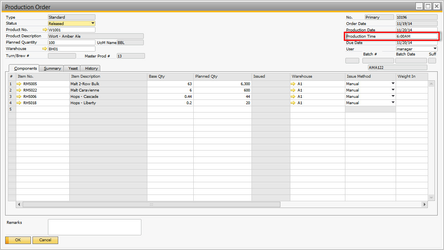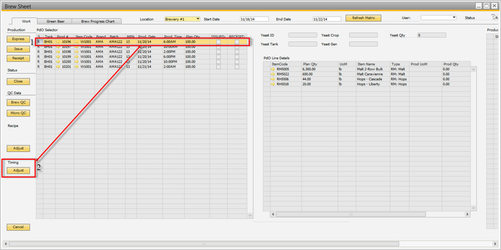Dynamic Timing
Initial Setup:
Warehouse Interval Setup: This is what tells the system how much time to add to each production order.
- Click on Administration → Inventory Folder → Warehouses (Fig. 1)
Tip: Be sure 'User Defined Fields' are displayed. - Switch to 'Find' Mode by click on the Binoculars or Control+F on your keyboard, then search for the warehouse that you are brewing into.
- On the right hand side of the screen, locate warehouse interval, and put in the interval of your brew house in HOURS. (Fig. 2)
Item Master Data Setup: This sets up the interval used in planning your production on the Production Order Creation Wizard
- Locate your 'Wort' items (generally starts with 'w')
Tip: Again be sure 'User Defined Fields' are displayed - Open your wort item and input the Lead Minutes/Lead Hours for each turn. (Fig. 3)
How do I use it?
- Open the Brew Sheet, and open the first production order you want to change. Change the Production Time and click Update.
- Select the production order you just updated and click under Timing (Fig. 4)
Video Demonstration
Other Information:
- The system only moves wort items located on the Brew Sheet
- Dynamic Timing is set at the warehouse level only
- Timing is currently set to move forward up to 10 days
- Dynamic Timing does roll over to the following day
Fig 1.
Fig 2.
Fig 3.
Fig 4.




